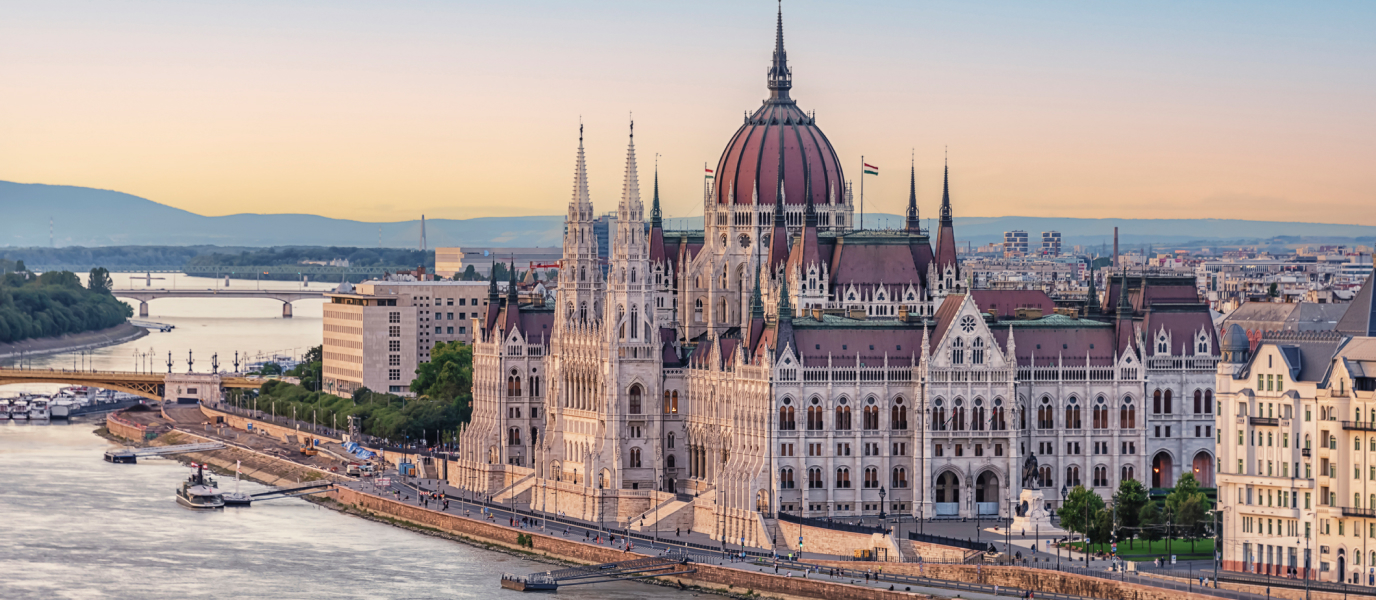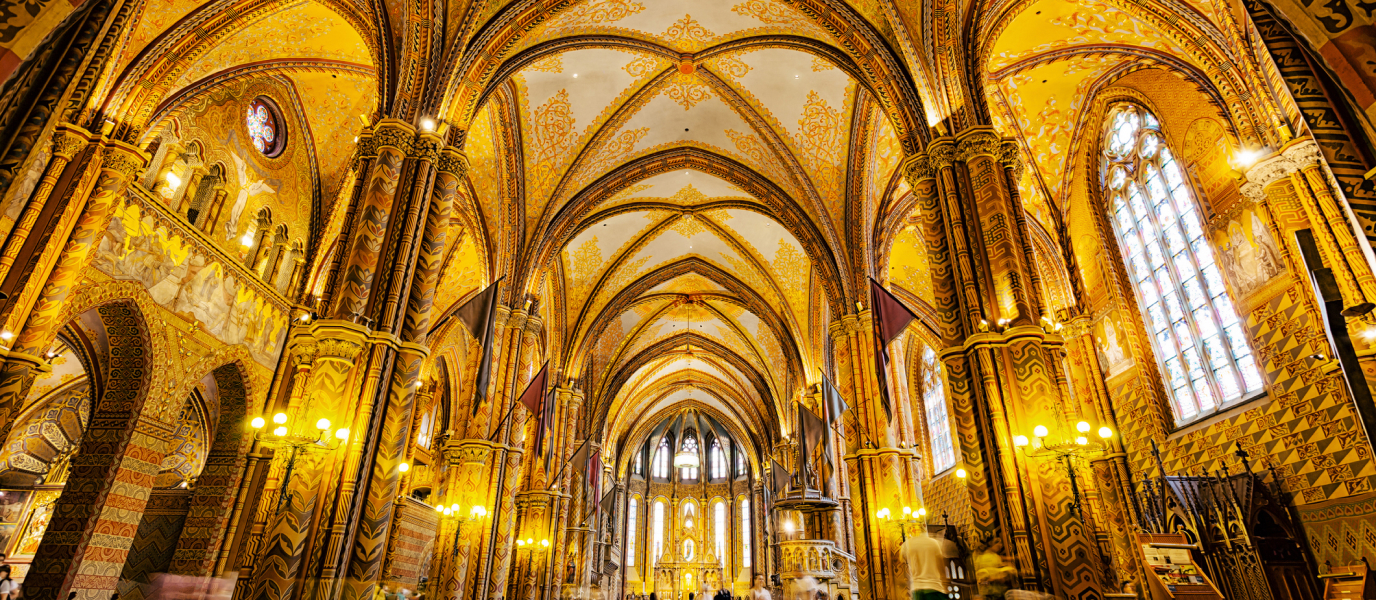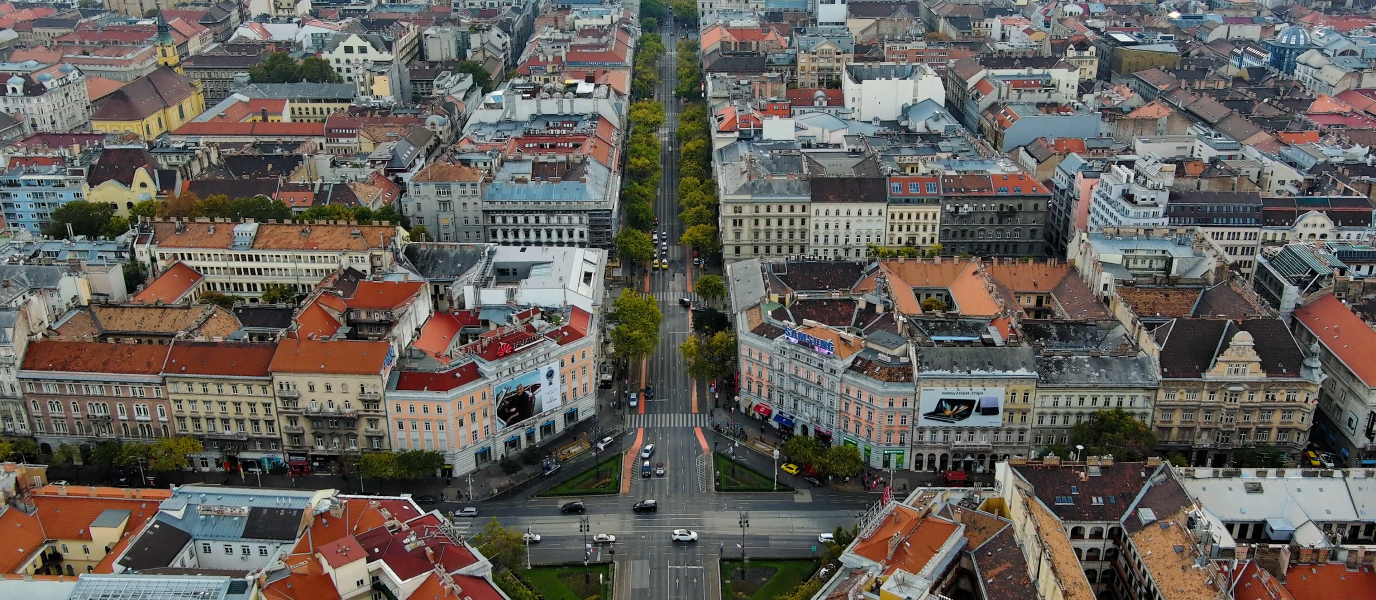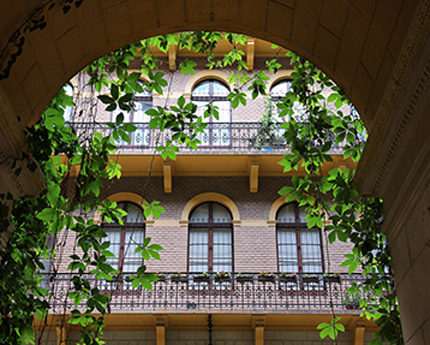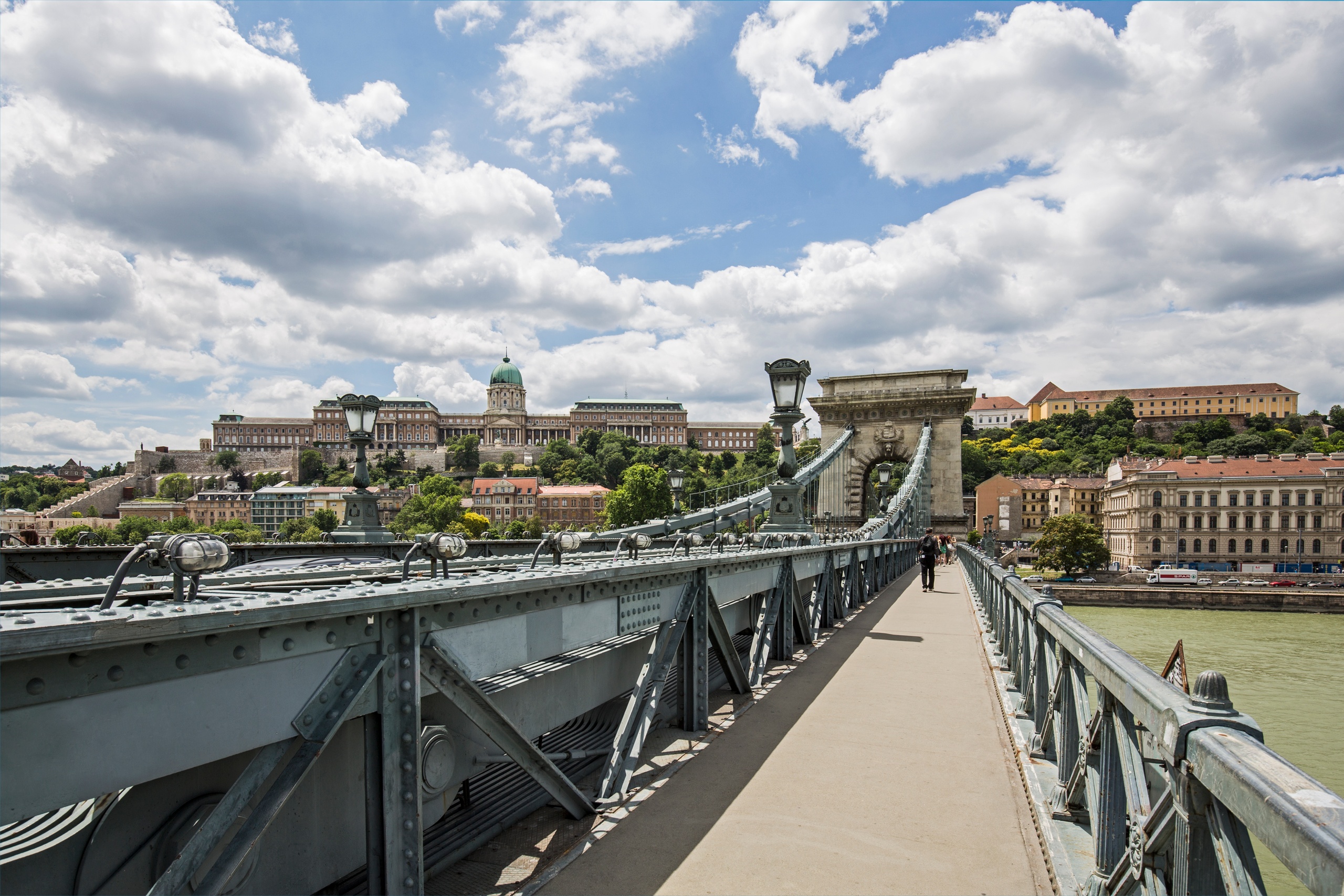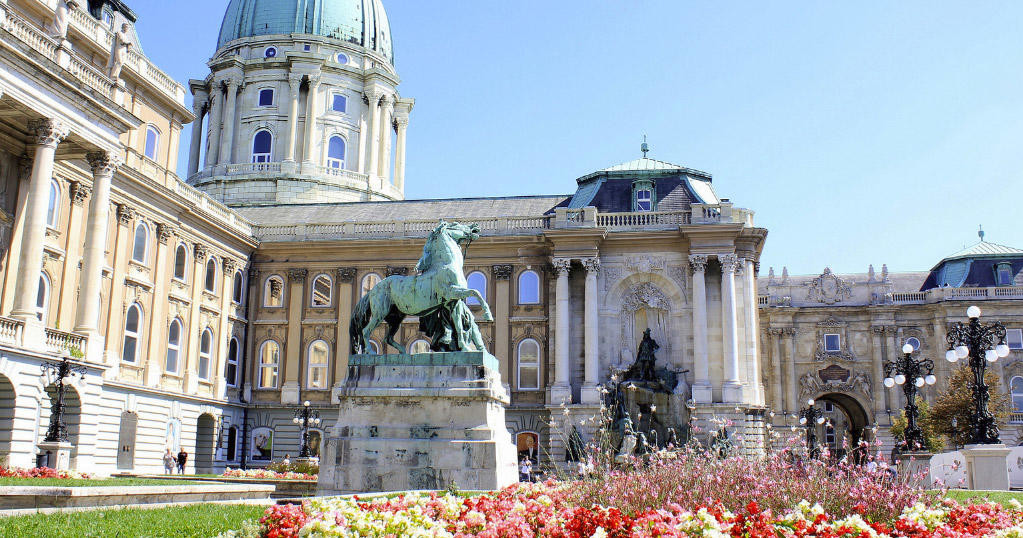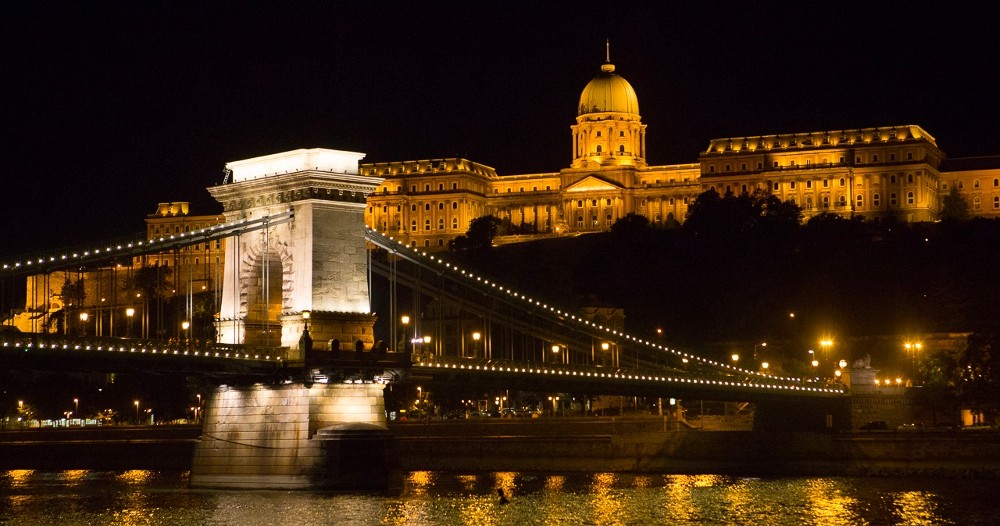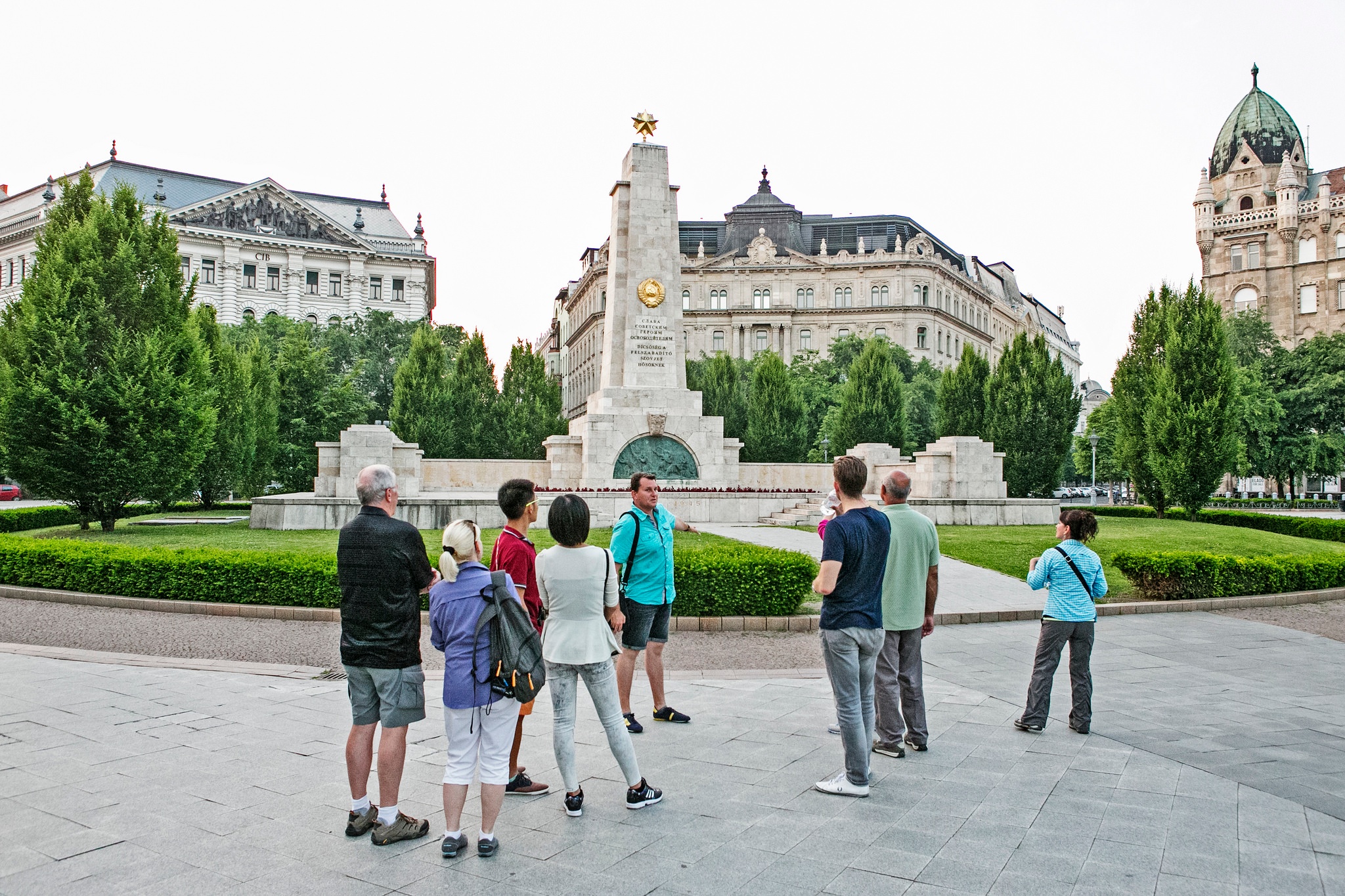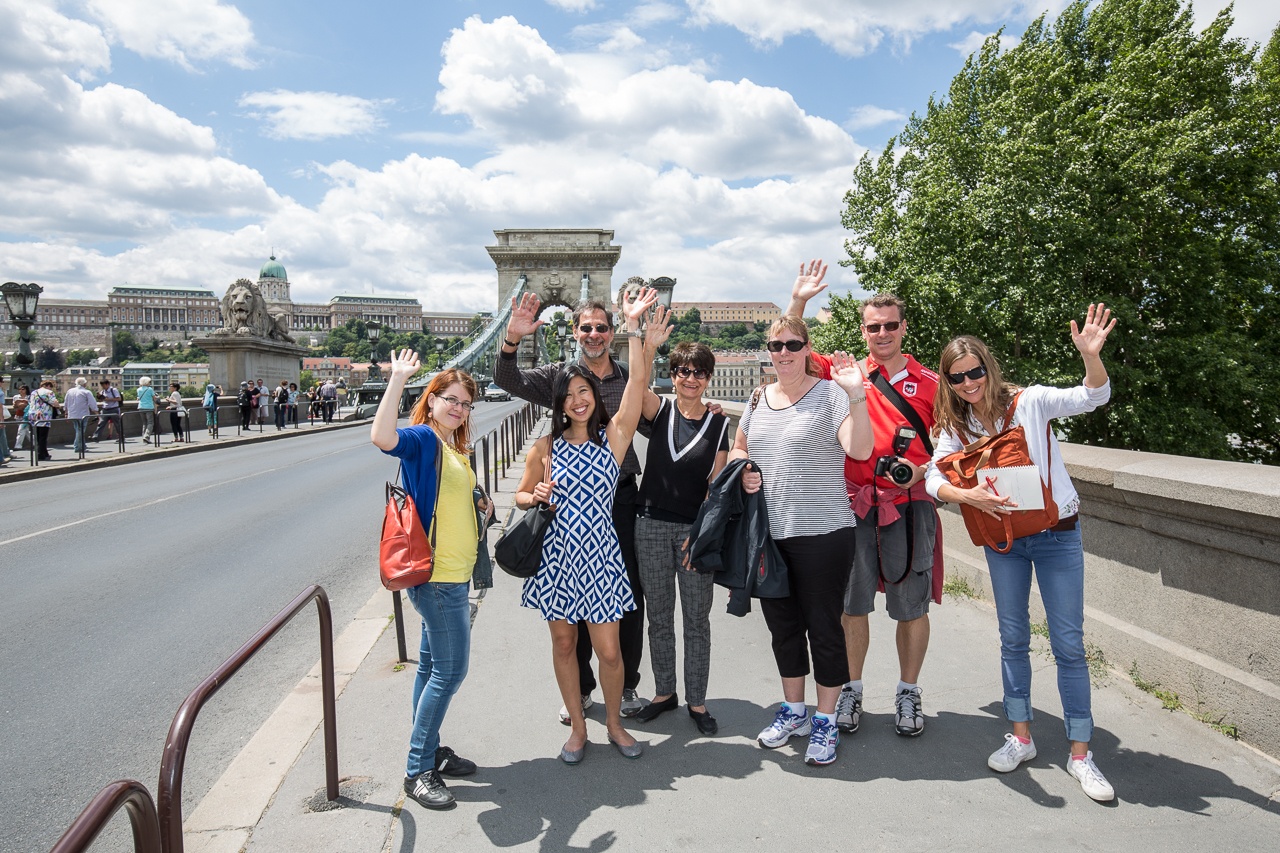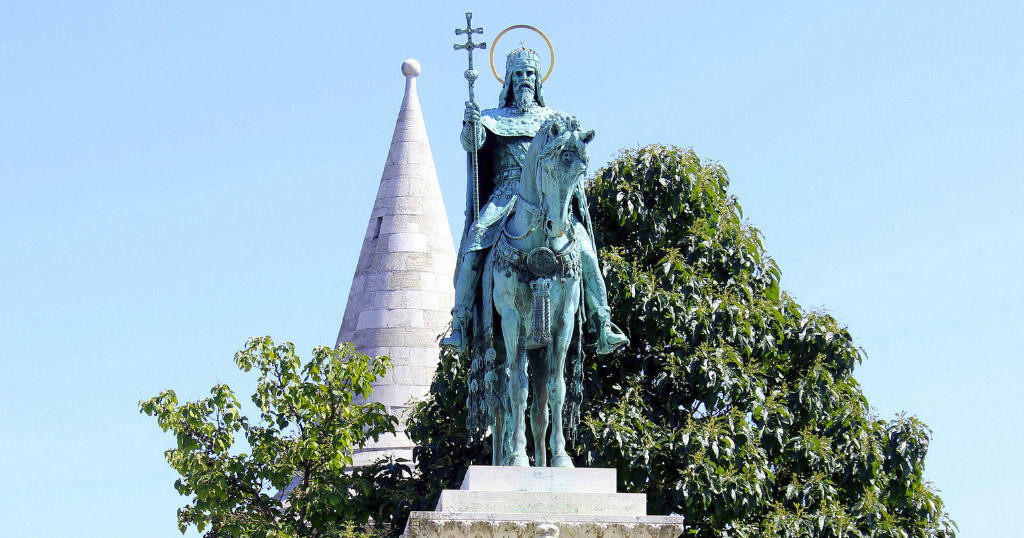One of the most characteristic silhouettes along Budapest’s skyline is represented by Buda Castle or the Royal Castle, located at the top of Buda Hill. This palace has been of vital importance in the history of Budapest and Hungary, and nowadays it is a tourist attraction and a World Heritage Site.
The castle enjoys a privileged position overlooking the city and the Danube: the roof on the Buda side has been photographed many times by visitors. In fact, a very popular way to go up is to take the castle funicular from the Chain Bridge.
This article talks about the history of both the castle and the surrounding neighbourhood and about the institutions it houses today.
Buda Castle from origin to present day
Buda Castle dates back to the mid-13th century, when King Béla IV of Hungary decided to build new castles throughout the territory. One of them was a fortress in Óbuda, very close to the present castle. The new settlement gradually became more populated and politically important, even though the court was located in Székesfehérvár.
Buda became the capital of Hungary in 1361. The castle underwent successive alterations and extensions, hosting royal assemblies and jousts, and reached a period of great splendour under the reigns of Sigismund of Luxembourg and Matthias Corvinus. The place had already become one of the main centres of power in Central Europe. The Renaissance brought new architectural and decorative styles with it, as well as enlightened people such as musicians, writers and astronomers who populated the place.
After a century and a half of Ottoman domination, the castle was badly damaged during the liberation of Buda in 1686, forcing it to undergo extensive restoration when the kingdom of Hungary was restored to Habsburg rule. The renovated Royal Palace, now in Neo-Baroque style, was one of the largest in Europe.
The damage would return decades later, during the World War II siege of Budapest (1944-1945), when Buda Castle was the last Nazi stronghold in the city until the defeat by the Red Army.
The Allies captured the castle on 10 February 1945 after the Battle of Budapest, which ended in ruins. The subsequent Hungarian Communist government rebuilt the castle in a Neoclassical style, eliminating references to the previous monarchs and transforming spaces into exhibition halls to which the Hungarian National Gallery and the Budapest History Museum were moved.
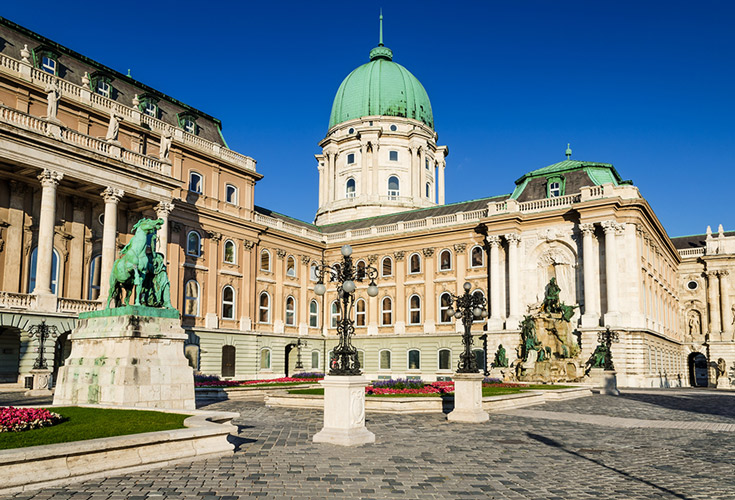
Buda Hill
As we have seen, the fact that it is a hill has given the site a very important strategic value, with battles and sieges taking place throughout history. This upper part of the city is a small hill that runs from Castle Hill to Géllert Hill towards the south-east, where it reaches a height of 235 metres. At its foot, you will see Géllert spa, from which it takes its name.
At the top of the hill stands the Liberty Statue, a column honouring the Soviet soldiers who fell in the liberation of 1945, a privileged vantage point overlooking the city.
On the other side, to the north of the castle, you will find the popular and beautiful Fisherman’s Bastion, another eternal viewpoint overlooking Budapest. Next to it, you will find the historic Matthias Church and the beautiful and picturesque Castle quarter, where stone plays a superlative role.
Széchenyi Library
The National Library of Hungary, or Széchenyi Library, is one of the institutions that occupy part of Buda Castle. It is named after Ferenc Széchenyi, its founder and father of the politician István Széchenyi, after whom the famous spa is named.
The library was founded in 1802 with Széchenyi’s own collection, but was moved to the castle in 1985. It keeps around seven million works, of which one million are manuscripts and 1,700 are incunabula. One of its gems is the oldest text in Hungarian.
Hungarian National Gallery
Another wing of the castle houses the National Gallery, which is one of Hungary’s leading museums, mainly devoted to culture. It keeps works ranging from the 15th to the 20th century and covering all genres, from medieval to Renaissance and contemporary art.
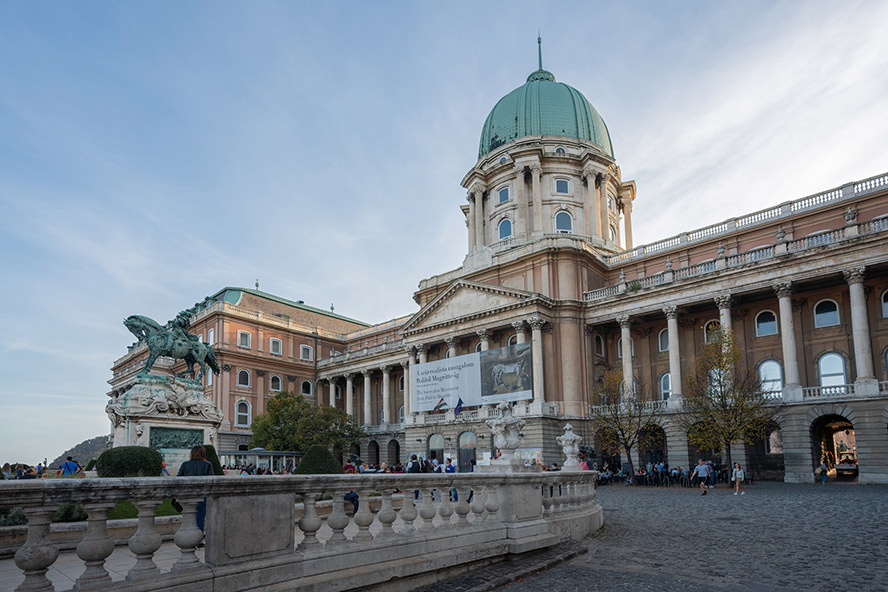
Budapest History Museum
Another major institution occupying Buda Castle is the Budapest History Museum, one of the best in the country. It provides an overview of the city’s history, from prehistoric and Bronze Age artefacts to objects from Roman Budapest (Aquincum) and objects from the various Hungarian kings.
The museum conceals a basement with a Gothic chapel that survived World War II and belonged to the castle that existed before the present Royal Palace.
Where to eat near Buda Castle
Next to the palace is the Castle quarter, a quiet area of narrow streets and charming stone houses. In addition to exploring it leisurely, you can take the opportunity to eat in one of the local restaurants, for example:
- Pest-Buda Bistro: homemade food in the heart of the Castle district. Goulash and sausages are among its most popular choices.
- Mandragora: local food at a good price in a cosy atmosphere, with occasional live jazz. It offers Hungarian specialities such as venison and pork loin.
- Halászbástya: if you prefer something special, stop by this restaurant. Dining on the terrace with views will leave you breathless. Its specialities include wild boar medallions with chestnut purée.
Where to stay in Budapest
In a city like Budapest you deserve a comfortable and practical place to stay, so you can go out and explore all that it has to offer every day. A great option is the Barceló Budapest, a four-star hotel located very close to St. Stephen’s Basilica and the Chain Bridge, i.e. right in the heart of the Pest side of the city.
This modern 179-room hotel has everything you need for a unique stay in the Hungarian capital, from an à la carte restaurant to a skybar and 24-hour fitness centre. If you are looking for accommodation in Budapest, take a look at this hotel because its location will convince you.



































































